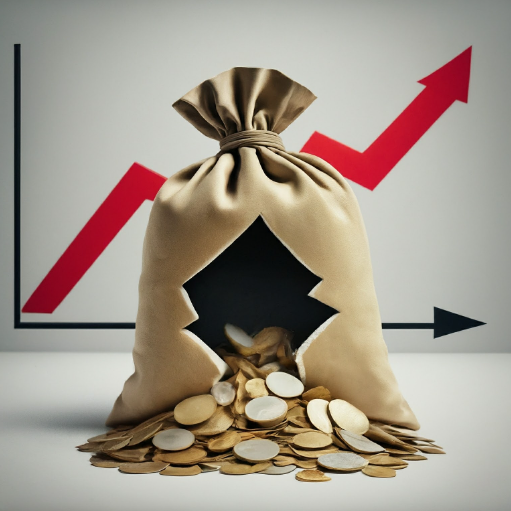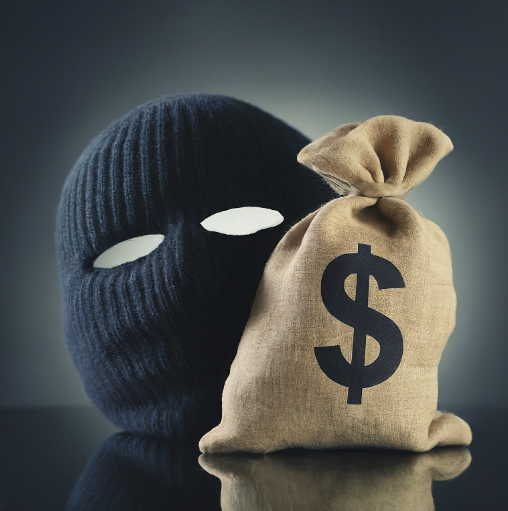How to Beat Stealthflation
In “The scourge of ‘stealthflation’ – Companies have found sneaky ways to raise prices. Where will it end?” The Economist aired a litany of egregious ways in which companies try to foist higher prices on consumers. Some of the violations appear to result from insufficient competition in the marketplace. Some of the violations come from clever methods for extracting more revenue from consumers with a higher willingness to pay (lower price elasticity). Other violations are simply cultural movements that may have spun out of control. Fortunately, in most cases of stealthfaltion, consumers can fight back and exercise choice. I examine each category of stealthflation covered by The Economist.

Unbundling
Companies most effectively unbundle products or services when they discover that sellable components have price elasticity of demand notably lower or higher than the product as a whole. A company with sufficient capacity can use unbundling to increase revenues and profits in two ways: 1) by increasing consumption by lower end consumers who get access to a product or service that was previously priced outside of their budget, and 2) by extracting a higher total price from higher-end consumers with low price elasticity who value most or all of the bundle. For example, at the low-end, Spirit Airlines opened up air travel to a new segment of consumer who had a very basic need to travel from A to B. The Economist laments that “airlines are experimenting with unbundling perks from business-class tickets.” However, such efforts make economic sense given these customers have much higher willingness to pay (lower price elasticity) than non-business travelers.
Planning is the best way to beat unbundling stealthflation. Well in advance of needing a product or service, decide what you really need and budget accordingly. Do not decide on unbundled purchases in the moment of need. Otherwise, convenience and expediency can convince you to pay a higher total price. Get to know your own preferences so well that the purchase of unbundled products and services feels natural and absent of conflict. Lack of clarity on preferences can also drive consumers to overpay for unbundled products and service.
Luxury Services
A luxury service can be a cousin to unbundling. For example, the business class airline ticket is a luxury service offered by airlines to those who want to improve their flying experience over the standard cabin. The Economist grouped luxury services into the unbundle stealthflation when criticizing BMW’s subscription charge for heated seats and Mercedes’ boosted acceleration for some electric vehicles. These offerings look more like luxury services than unbundling; they may only seem unbundled because companies either never thought to charge for them and/or technology did not allow them to do so until now.
Moreover, these kinds of extra charges are things that a company will more likely accomplish at the higher end of the market where willingness to pay is more tolerant of, and even seeks out, luxury pricing. If a company tries these tricks on standard or lower-end models, it can kill the business and undermine goodwill.
Consumers can avoid the stealthflation from luxury services: calibrate your sense of satisfaction and contentment to the realities of your budget. No one needs a luxury good. Once you treat a luxury as a treat, then paying for it does not feel like an affront…and going without is also no problem at all.
Fee-palooza
The Economist categorized the growing adoption of fees as unbundling, but technically this form of stealthflation is more an example of businesses looking to uncover as yet untapped value. These fees call attention to features and services that were previously taken for granted. These extras are typically not optional, so they are not truly examples of unbundling. The separate parts of a real bundle should feature a core service with optional enhancements.
When a hotel or resort charges a check-in fee, or a restaurant charges a packing fee for bagging food to go, or a ride share company charges a safety fee, a consumer’s only option is to take the business elsewhere to avoid the charges. Fees are an insidious form of stealthflation because they leave consumers feeling helpless and at the mercy of the business. A consumer has to do extra work to exercise choice by finding alternative products and services, including substitutes.
There is an twist on fee transparency. UC Berkeley’s Haas School of Business published the results of a Stub Hub experiment that showed consumers are more likely to make purchases when fees are revealed after they choose tickets than when fees are revealed upfront: “Overall, the StubHub users who weren’t shown fees until checkout spent about 21% more on tickets and were 14% more likely to complete a purchase compared with those who saw all-inclusive prices from the start.” This lock-in effect supports the notion that advanced planning and decision-making before the heat of the moment of purchase helps consumers best tune their costs to their budgets!
Surge pricing
I think the Economist should agree that surge pricing makes economic sense beyond stealthflation. I wrote about the justifications for surge pricing when Uber stirred controversy in 2015 after implementing the practice. Basically, when a company faces excess demand relative to its supply, surge pricing helps to ration out the supply. The higher prices reduce demand until supply can meet that demand. If a company persists in underpricing a scarce good or service, then it risks generating ill will among consumers who get the impression that the company cannot deliver. That business can be lost for good. In Uber’s case, the higher prices also increase supply by motivating more drivers to go into service.
Having provided that justification, I am still taken aback to read The Economist describe a British pub that uses surge pricing for its beers. I would love to get more information on this particular marketplace. I would have assumed that a pub unable to figure out how to flex its supply would lose demand to better operators.
Planning is again a key tactic for dealing with the “stealthflation” of surge pricing. If the cost of a ride share after a concert may surge beyond tolerance, plan to hang out for a while (like the old days of waiting in a long line for a taxi). If the cost of beer becomes intolerable, plan on drinking other beverages (ok, I know this may sound like sacrilege to British pub fans!). The Economist referenced consumer choice in the face of surge pricing:
“Prices of tickets for concerts, sporting events and theme parks are also constantly tweaked. In theory, this is a triumph of the invisible hand of the market: if you want to pay less, buy when demand is low. But disgruntled consumers complain that the line between charging what the market can bear and profiteering is a thin one.”
Yet, disgruntlement does not a stealthflation make. “Profiteering” happens when a company takes advantage of weak competition to extract higher prices out of a consumer that faces no choice. Surge pricing can also look like profiteering when the higher prices cannot or do not lead to an increase in supply to meet the demand.
Tipping
The Economist included tipping as a form of stealthflation: “there is the seemingly unstoppable epidemic of tipping.” This reported scourge reflects cultural perspectives. The Economist acknowledged that “foreigners visiting America have for years been caught out by the country’s pervasive tipping culture and its eye-watering expectations.”
According to CNBC, tipping in the U.S. was 10% in the 1950s, 15% starting in the 1970s and 1980s, and now anywhere from 15% to 25%. During the pandemic, tipping rates seemed to jump. The pandemic changed things as a number of consumers felt extra appreciative of service workers who sometimes put their health at risk and also delivered services which took on an extra premium during lockdowns and periods of limited mobility. While the average tip has changed little since the pandemic ended, 43% of consumers tipped 20% or more in 2022, down from 56% in 2021 (according to CNBC reporting on a survey from Popmenu).
While the U.S. apparently has the highest average tipping rate on the planet at 20%, the real stealthflation issue is the way in which tipping expectations are spreading across the economy. The Economist observed that “touchscreen-based checkouts mean customers are being asked to pay tips more often, and in unlikely places. They may find themselves being asked for tips at convenience stores, by self-service machines and even on websites.” The most egregious tipping affront occurs when consumers are forced to decide on a tip before receiving a product or service. This feature of DoorDash (DASH) is one of the reasons I significantly reduced my use of the food delivery service. Not only does a pre-service tip demand evaluation with little information, but also a consumer can worry whether the quality of service will depend on the tip.
CNBC defined tipflation as “the phenomenon of tipping becoming increasingly more widespread and expensive (in terms of acceptable percentage).” Thus, tiplfation is a specific form of stealthflation. Like the Economist, CNBC identified digital payments and payment terminals as a primary driver of tipflation.
Fortunately, tipping is the easiest “stealthflation” for consumers to manage because in most cases tipping is optional. Tipping is a choice a consumer makes (excluding of course cases where businesses charge a tip like a fee) even if making that choice feels uncomfortable.
Apparently, generational differences impact the way consumers tip. The Wall Street Journal’s “Your Money Briefing” recently discussed research from Pew on tipping. Older folks tend to see tipping as an acknowledgement of service whereas younger folks tend to think of tipping as an obligation. This difference reflects the recency of tipflation: older folks are clinging to past cultural norms for tipping. The amount people tip can depend on their relationship to the business and/or staff.
Beat Stealthflation By Choice
Stealthflation is the evil twin of greedflation. Greedflation is the outcome of a company wielding pricing power against consumers who have insufficient choice. Stealthflation is the outcome of a company wielding pricing power against consumers who are unaware of their choices or prefer not to exercise their choices. The definition and identification of choice can be subtle, but this distinction is important. With planning, budgeting, and/or prioritization, consumers can beat a lot of forms of stealthflation by choice. Thus, presumably, stealthflation is not sustainable. That prognostication is just about the best news I can offer on how to beat stealthflation!

